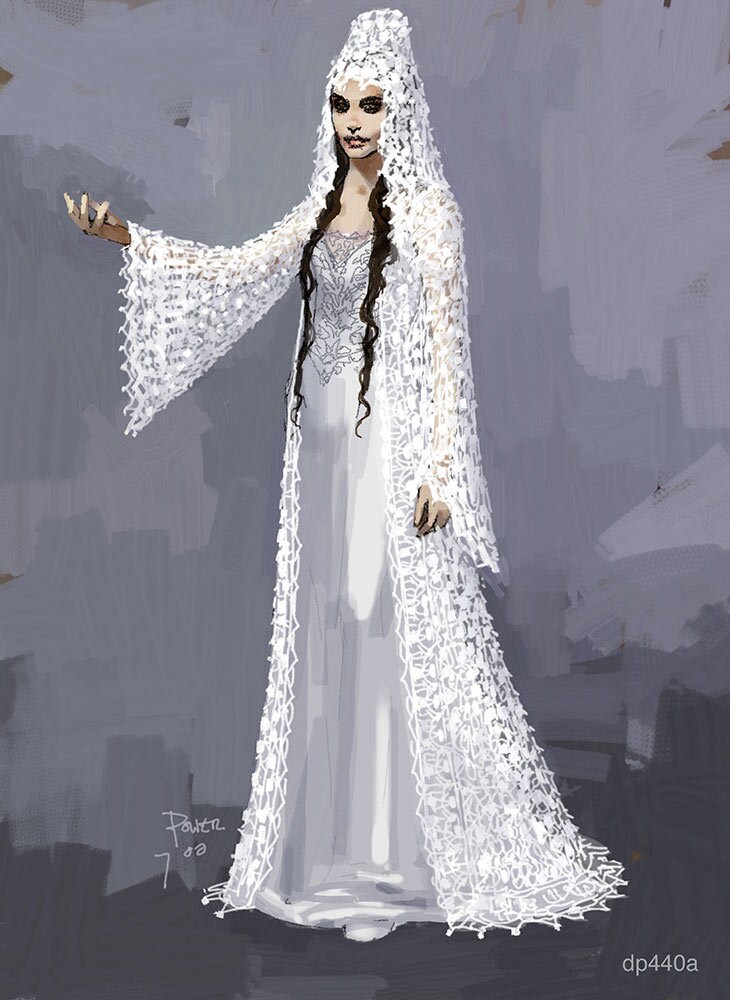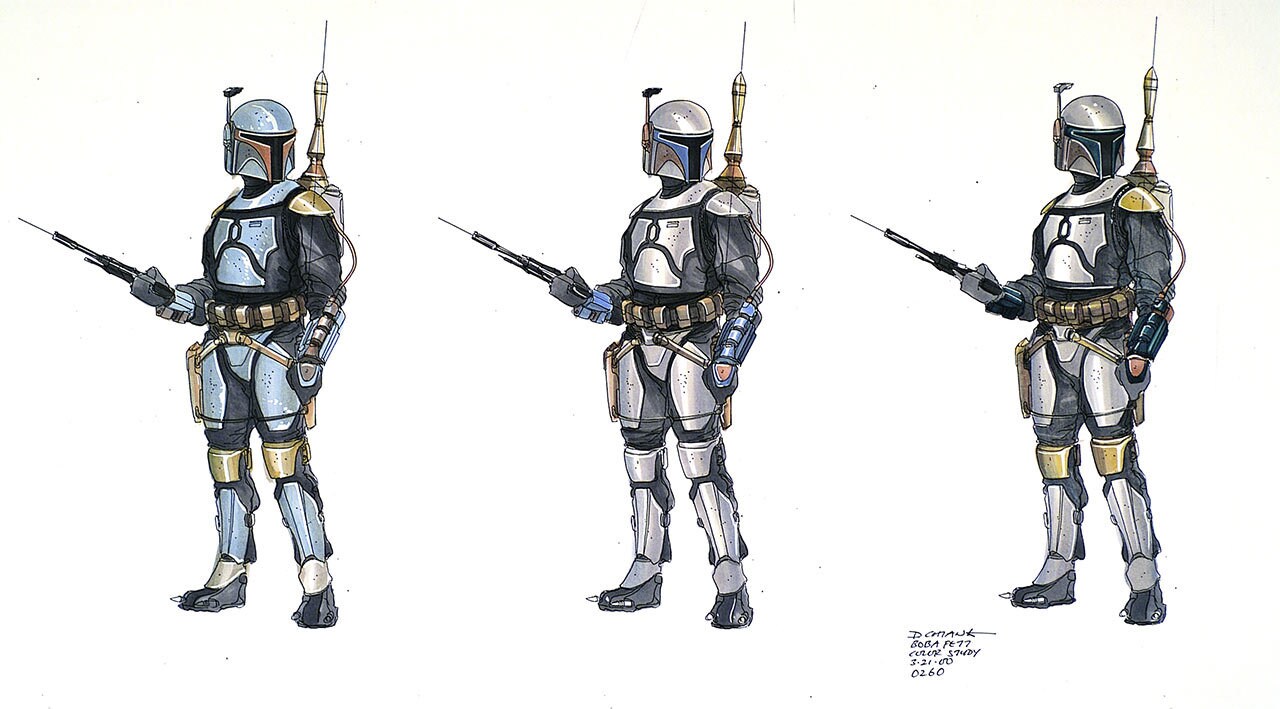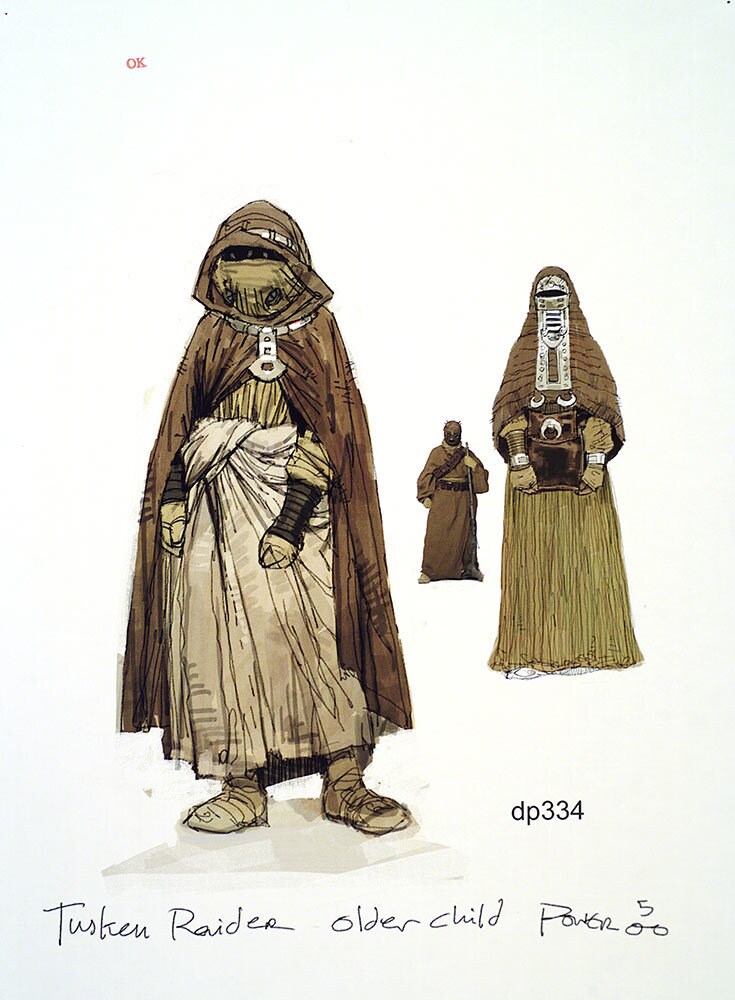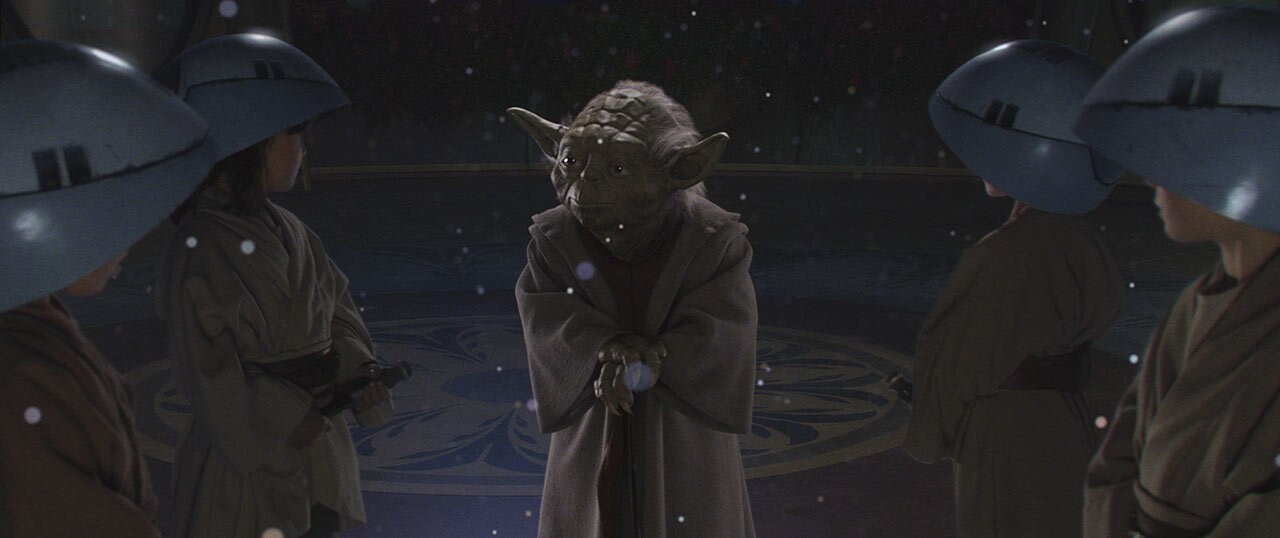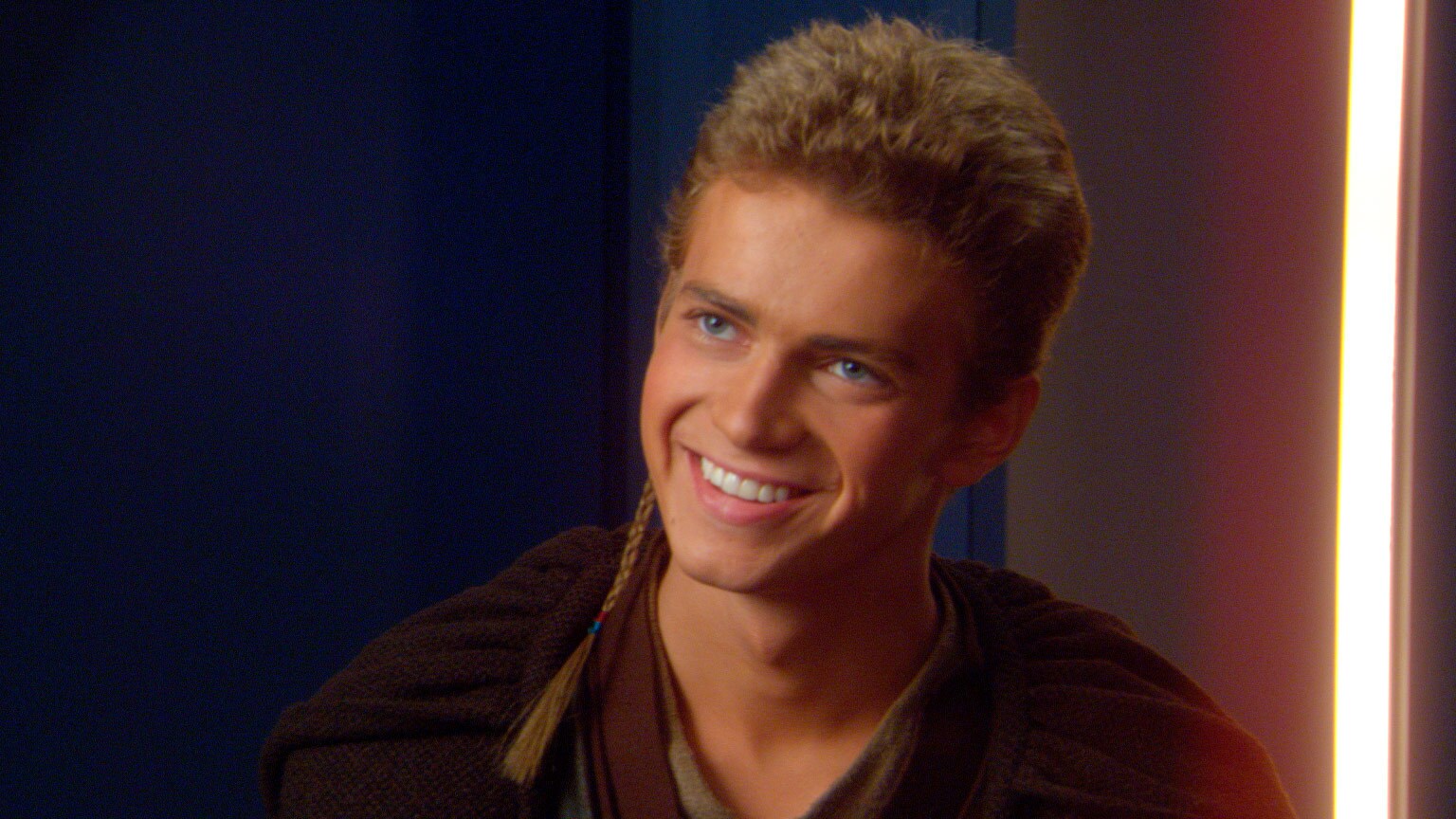The middle chapter of the prequel trilogy, Star Wars: Attack of the Clones, arrived May 16, 2002. To celebrate the movie’s 20th anniversary, StarWars.com presents Clones at 20, a special series of interviews, editorials, and more.
Costume designer Trisha Biggar joined the production staff defining the look of the Star Wars prequel films in 1997 with an affinity for history and a pedigree in costuming for the theater. Fresh off a brief stint working on The Young Indiana Jones Chronicles with Lucasfilm, she led a department of about 60 costuming professionals to create Queen Amidala’s opulent wardrobe and devolve the Jedi robes that had first been introduced in Star Wars: A New Hope.
But Biggar’s biggest challenge in the eight years she spent working on the trilogy of films chronicling Anakin Skywalker’s transformation into Darth Vader came with Star Wars: Attack of the Clones. “Certainly, Episode II was the most challenging of the three films,” Biggar tells StarWars.com during a break from working on her current project, Outlander, in Scotland, on a crew that still includes a handful of crafters she met at Lucasfilm.
Attack of the Clones’ new digital camera technology, a first for a Hollywood blockbuster to be entirely shot in, changed the way fabrics appeared on screen. The characters she had helped to introduce to the world in Episode I had aged 10 years and were evolving in other ways, as Padmé took on the role of senator and explored her personal growth as a young woman falling in love with a Jedi and Anakin inched closer to the brink of destruction. And after weeks of prepping at Leavesden Studios as the pre-production crew waited for Moulin Rouge to wrap in the studio space they would require in Australia, Biggar and her team touched down in Sydney about eight weeks later than expected.
Then director George Lucas arrived, and “the schedule turned on its head completely,” Biggar recalls. “He really felt that the scenes should have been shot chronologically as much as possible because of the emotional content of the film, to allow for the actors to respond in that way.”
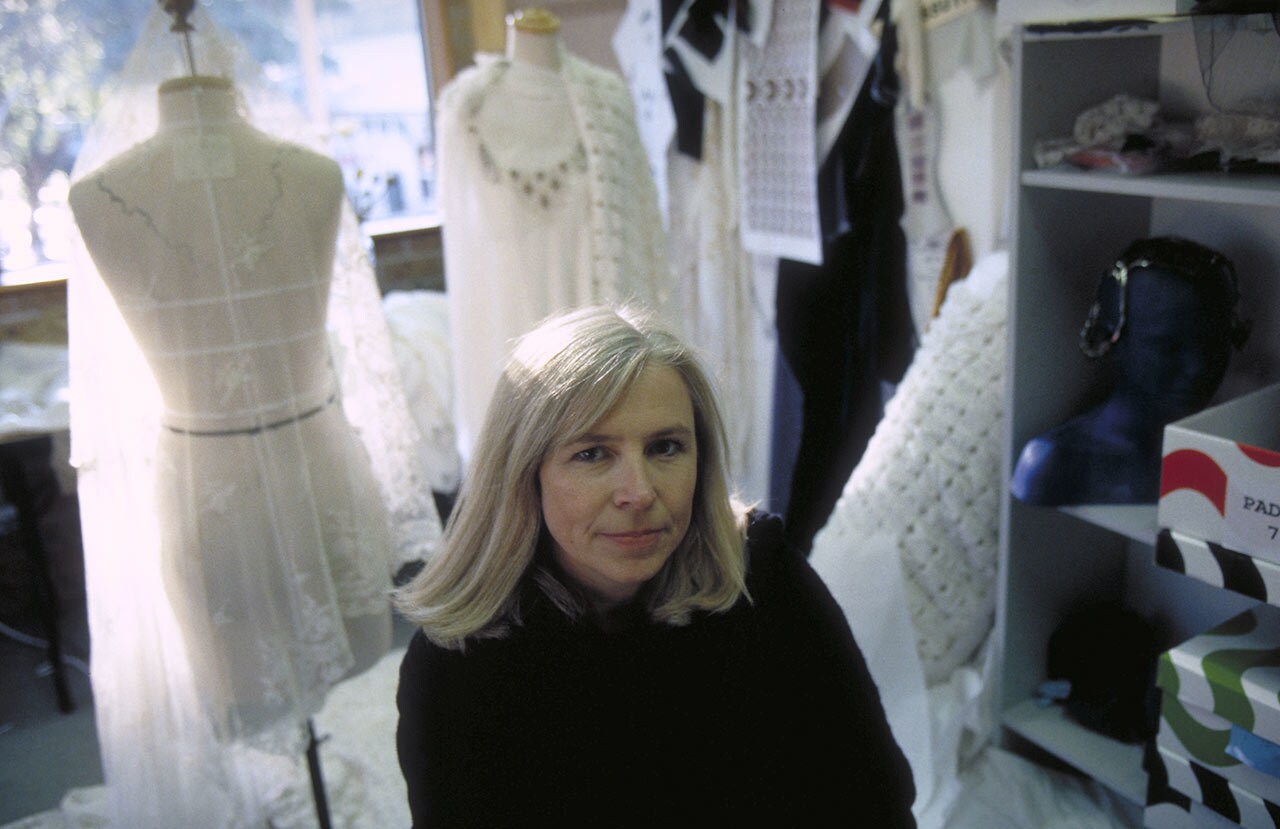
Practically overnight, Biggar’s department doubled to about 120 people, with local cutters and sewers from Australia and New Zealand hired on alongside professionals flown in from the United Kingdom. The schedule upheaval meant members of Biggar’s team worked seven days a week for many weeks, sometimes pulling 14-hour days and stitching into the wee hours of the morning to ensure each costume was completed for call time. “Everything that was being prepped before suddenly went to the end of the schedule and everything that we hadn't started came to the front,” Biggar says. “It was perfectly understandable, you know; that was a great idea for filming. It was just one of the things that came in quite late.”
The tight turnaround meant some final alterations were being done hours or mere minutes before filming. Costume props supervisor Ivo Coveney was supergluing an accent onto one of Padmé’s belts right before actor Natalie Portman was needed on set when he accidentally glued his finger to the garment. With not a moment to spare, Coveney sliced himself free with a sharp knife, losing a little skin but managing to avoid bleeding. “He was very good at being very delicate,” Biggar recalls.
Heroes and future villains
Twenty years after its debut, Attack of the Clones remains the film that defined the romance between Padmé and Anakin, introduced Jango Fett and the Tusken tribe’s family unit, and saw the first visual depiction of the Clone Wars first mentioned in Star Wars: A New Hope. Biggar was cautious to connect characters like Skywalker and his master, Obi-Wan Kenobi, to the costumes created for The Phantom Menace as well as whatever their individual futures held. “We were moving Obi-Wan Kenobi from [his Padawan days in] The Phantom Menace to meet up with himself in A New Hope. It was interesting. On the first film, we were just looking forward to the future, but when we were doing Attack of the Clones, we were having to look backwards to what they had been and then what they became,” Biggar says.
The color story of the movie is notably darker than its predecessor, as the shadow of the Sith looms and war breaks out in the Republic. “The colors changed, definitely, and some characters did darken, particularly Anakin,” Biggar notes. “We put leather tabs on him as sort of a forward reflection of the leather that we would see him in later [as Darth Vader].” But Biggar still had to be cautious to include the lighter side of Skywalker, reflecting the man who Padmé loved. “It's such a difficult part, too, to play having to show both sides.”

Other characters still had unwritten futures, like Amidala, but her growth from monarch to senator, and aging the character up from 14 to 24, gave Biggar and her team plenty to work with. “We were seeing her as a senator and a young woman. She was much more aware of herself. She wasn't having to be so formal or elaborate. She wasn't as serious. And, she was falling in love.” More ceremonial gowns were reserved for Padmé’s scenes addressing the senate on Coruscant. One particular dress had a vintage yellow silk moire that Biggar had purchased from a shop in Paris. The day before filming the scene -- which was ultimately cut -- the crew discovered the fabric created a strobing effect on the digital cameras. To solve the unexpected issue, the costume department spent hours that night hand sewing a net of heavy beading on the exposed swath around Portman’s face.
Padmé’s wedding gown was famously fashioned from a vintage Italian bedspread that Biggar had found second-hand. There wasn’t enough fabric to complete the look, but Sandra Fullerton's embroidery company matched the cording pattern to add another 300 meters of detail. “She saved the wedding dress, really,” Biggar says. The veil was a separate piece of Maltese lace that had probably been originally crafted as a tray cloth. “That came from a vintage place I used in Glasgow a lot,” Biggar says, estimating about 75 percent of her vintage finds hailed from that single shop. “If you look at the pictures of the costumes, you can see on almost every single Padmé costume there is something from this place in Glasgow.”
Attack of the Clones allowed the team to construct Amidala’s closet using some of the lessons learned during that production of Episode I. Some of the royal headdresses were so elaborate and heavy on that film, the crew had designed pulley systems to take the weight off Portman’s body in between shots. “So by the time we got to Attack of the Clones, we were going lightweight with everything.”
From the outset, Lucas expected that Portman’s character would have fewer costume changes than in the previous movie, but by the time filming wrapped Amidala’s closet had more than quadrupled, growing from three or four costumes at the start to a final count of around 18, including cloaks worn over certain garments. “It became that she had a new costume every time we saw her,” Biggar says with a laugh. The gray apartment dress worn during the scene where Padmé packs for Naboo remains one of Biggar’s favorites. “It’s a fitted gray velvet bodice with a beautiful vintage beaded section at the front. It was very lovely on her. It was just a lovely shape, I thought, and I loved the fabric.” But it’s difficult for her to pick a true favorite from the covetable costume closet. “As you work on one, at that point it is the favorite, hopefully. Usually. And then you're on to the next one, which becomes a favorite.”
While water posed an issue, shrinking the woolen Jedi cloaks during heavy-rain sequences, an accidental stain almost ruined one of Padmé’s pieces. Some motorboat oil got splashed onto the front of Padmé’s two-piece set worn under a cloak used in the scenes at the Lars homestead, Biggar recalls. “I remember taking the skirt and washing it in the bath in the hotel I was in because we couldn't have used it again. I just thought, 'Well, it can't make it worse. It's already ruined and we had continuity to film on it.” Luckily, the stain came out with a little scrubbing and copious shower gel.
General Jedi
Attack of the Clones also called for an expansion of the Jedi Order, with several new masters and knights making an appearance in the Battle of Geonosis. “I made sure that we didn't ever see two people who looked the same. There was the arena battle and there was a lot of Jedi made for that,” Biggar says, “because they're all individual people, from different places and different cultures and all with different builds and bodies. I think it’s much more visually interesting.” Jedi like Luminari Undulli and Shaak Ti stand out in particular, with leather detailing and gauntlets along with alien makeup.

For scenes at the Jedi Temple, Biggar ensured the distinctiveness could be seen all the way from the wisest elders down to the youngest younglings. “We made all these little helmets, which was really sweet,” she says for the class seen practicing their lightsaber skills. Librarian Jocasta Nu was outfitted in a unique piece of vintage fabric from Africa to help make her character stand out from the battle-ready mission attire of others. The fabric was dyed and altered, as it was essentially an oversized scrap with some missing embroidery when it was salvaged. In its final form, it became one of the most recognizable Jedi costumes from the film, carefully draped as a standout piece on actor Alethea McGrath.
“When you find [a piece like that], you want to use it somewhere it's going to be seen and it's going to look good on whoever's wearing it,” Biggar says. “She was an amazing woman. I remember coming to meet her for fitting and seeing this wonderful posture. I think she was in her 70s but she had the posture and the movement and the fluidity of a very much younger person. She moved beautifully. And she seemed to have an interesting character. Sometimes the fabric dictates [things]. I quite often find that you have a piece of fabric it calls out to be used on somebody. She was a lucky person or the fabric was lucky to get her.”
All in the Fett family
The film also called for the exploration of the underworld, with Zam Wesell making her debut alongside Jango Fett, the father of future bounty hunter Boba Fett and the entire clone army.
Biggar took a genealogical approach to Jango’s armor, initially considering giving it the sculpt of Boba’s iconic gear in the stark white of the original prototype. “Boba is actually copying his father,” Biggar says, “so we were trying to make visual links with aspects of the costume, trying to bring the prequels to join onto the original trilogy.” Ultimately, the general shape of the helmet and other armor pieces matched Boba’s gear from the original trilogy, with a color palette in blue and silver.
For Wesell, Biggar recalled a panicked phone call to Lucas after realizing that the purple hue of that character’s costume was a near perfect match for the paint on the wall she would be filmed standing near. There wasn’t time to remake the garment, which could have meant the scenic crew was about to get a rush order to repaint the entire backdrop, but Lucas thought the accidental tonal match was perfect for a bounty hunter trying to camouflage herself. “George said, ‘That's marvelous. You can just blend right in with the wall,’” Biggar says. “So that worked out really well.”
Costumers also took their first crack at young Owen Lars and his girlfriend Beru, who are slated to reappear in the forthcoming Obi-Wan Kenobi limited series on Disney+, with Joel Edgerton and Bonnie Piesse reprising the roles. While first dressing the duo who would raise young Luke Skywalker, Biggar looked at the costumes worn by the older versions of the characters in A New Hope to inform her decisions. “I took the feel of them -- Aunt Beru and Uncle Owen -- and tried to make it useful, but also tried to link it into Tatooine as we were seeing it in the earlier part of time,” Biggar says. “Just take it back to give their young versions something that was similar. Oftentimes, in personal style, you take what you enjoy when you're young or what you think you look good in, and you often take it forward into when you get older. You still wear a variation on that.”
The Tusken village where Skywalker makes a pivotal step toward his descent into darkness after the death of his mother gave Biggar the chance to define the look of the alien culture beyond the males seen in the original trilogy. The women were given a burka-like covering, echoing the many cultural references woven throughout the prequels and often seen in the Royal House of Naboo. “The idea was also protection from the sand,” Biggar says. “Just having a small slit to see through, to protect your face and your eyes. And we don't know what's there behind that because we never ever see their faces. We made the female more elaborate than the men that we had seen previously. It just seemed like a nice thing to set their culture apart and give them just a little bit of beauty in their sand-filled life.
For the children of the species, Biggar took inspiration from the shape of a pram’s hood to cover the little one’s head. “That was from a doll’s pram and sort of converted. That was the idea it came from.”
Even though the production was filled with challenges, two decades later what sticks in Biggar’s mind most is the kindness of the crew at Skywalker Ranch and the hours of laughter in the costume shop, as a team of uniquely talented individual crafters came together to sew hundreds of costumes, sometimes working long into the night.

“I would definitely say it's probably the most challenging job I've ever done just in terms of stamina, really,” Biggar says. “It was a learning experience, too, you know: never think things will go the way they're planned. Always expect the unexpected,” she says with a laugh. “And be prepared for it! I think, yes, I learned that lesson.” And despite the difficulties and long hours, many of the team members were elated to return for the final film in the trilogy, Star Wars: Revenge of the Sith. “We all came back for the next one. So it couldn’t have been that bad. They said it wouldn't be like that, and I believed them.”







